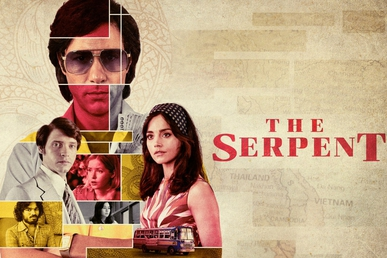Seeking the Serpent

New crime drama “The Serpent” is now available for Netflix users. From top to bottom, characters from “The Serpent” are Charles Sobhraj, Marie-Andrée Leclerc, Herman Knippenberg, Angela Knippenberg, Suda Romyen, and Ajay Chowdhury.
April 23, 2021
With a knack for evading authorities and deceiving young travelers, French serial killer Charles Sobhraj earned the nickname of “The Serpent.” The new multilingual BBC production “The Serpent,” which is now available on streaming platform Netflix, is an adaptation of Sobhraj’s true story, showing viewers an insight into his cruel crimes against humanity, along with the hunt to catch him, led by Dutch diplomat Herman Knippenberg.
The bulk of the show takes place in Bangkok, Thailand, which is Sobhraj’s homebase for his crimes. He spends his time buying and selling precious jewels, hosting parties, and preying on travelers who are usually alone. Along with his partners Marie-Andrée Leclerc and Ajay Chowdhury, Sobhraj drugs and kills victims, stealing their money and jewelry, and taking their identification to aid him in traveling. In the show, it was clear that Sobhraj targeted Western white travelers. However, though it was hinted at, his motivation for specifically conning and killing them was never explicitly discussed, which would have added depth to the viewers’ understanding of Sobhraj.
Typically speaking in English with his victims and French with his partner Marie-Andrée, Sobhraj’s multilingual abilities were highlighted in “The Serpent.” This was an aspect of the show that I enjoyed. By showing a variety of languages that Sobhraj was able to comfortably converse in, it furthered the notion that he is a man who is extremely adaptable to all situations, adding to his elusiveness.
A major film technique that the show heavily relied on was skipping around on the timeline. The main storyline of Knippenberg trying to catch Sobhraj was aided by very frequent flashbacks to a few months, or even years prior, and flash forwards back to the present. Though they provided more context to Sobhraj’s current situation, I found the sheer number of timeline changes per episode made it very confusing to keep track of what was happening and when it was happening.
Overall, this was a solid show based around true events, and the pacing did not feel too slow. However, due to the similarity of all of the murders, I felt it to be very repetitive and the constant flashbacks and flashforwards did not help the story along as much as it was likely intended to.








